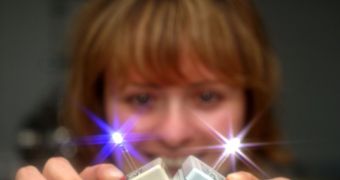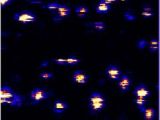Solid-state light emitting devices have great versatility, as they produce intense light, a great variety of colors, and can use tunable power sources. On the other hand, they share a dirty little secret. The semiconductor nanostructure tends to emit light in pulses, blinking on and off as the lights in a Christmas tree, which can be pretty annoying and also reduces their range of possible applications.
JILA, a collaboration between researchers from the National Institute of Standards and Technology and the University of Colorado, developed a method to fix this problem once and for all, by inserting a quantum dot that emits photons continuously and faster than any other similar device. On top of that, they have been successful in boosting the brightness of the quantum dot by 4 to 5 times, result which came more as a shock since quantum dots are mostly believed to radiate a specific amount of light, that is in direct relation to the material used to construct them.
David Nesbitt from NIST, one of the researchers in the team, reveals that they were able to do so by coating the quantum dot with a watery solution obtained from an antioxidant chemical, that is often used as a food additive.
The period between each light pulse was reduced from 21 nanoseconds to 4 nanoseconds, and the probability that the quantum dot would experience a random blink outside that limit was reduced by a factor of 100. However, Nesbitt argues that the blinking property of the quantum dot is not necessarily a bad feature, and that it could be used to provide with a measuring scale while probing low electron flows through nanomaterials.
The experiment used a quantum dot made out of a cadmium-selenide material, coated with zinc sulfide. During the excitation phase, the quantum dot is being shinned with a brier laser pulse, and an electron particle is being emitted. After a few nanoseconds, the free electron will be absorbed into a second atom and a photon will be emitted. The wavelength of the light particle is always in direct relation to the size of the quantum dot. The problem is that not all electrons get reabsorbed, thus part of them are ejected out of the system, giving the quantum dot its specific blinking feature. The antioxidant chemical prevents the electron from escaping the quantum dot.

 14 DAY TRIAL //
14 DAY TRIAL // 
